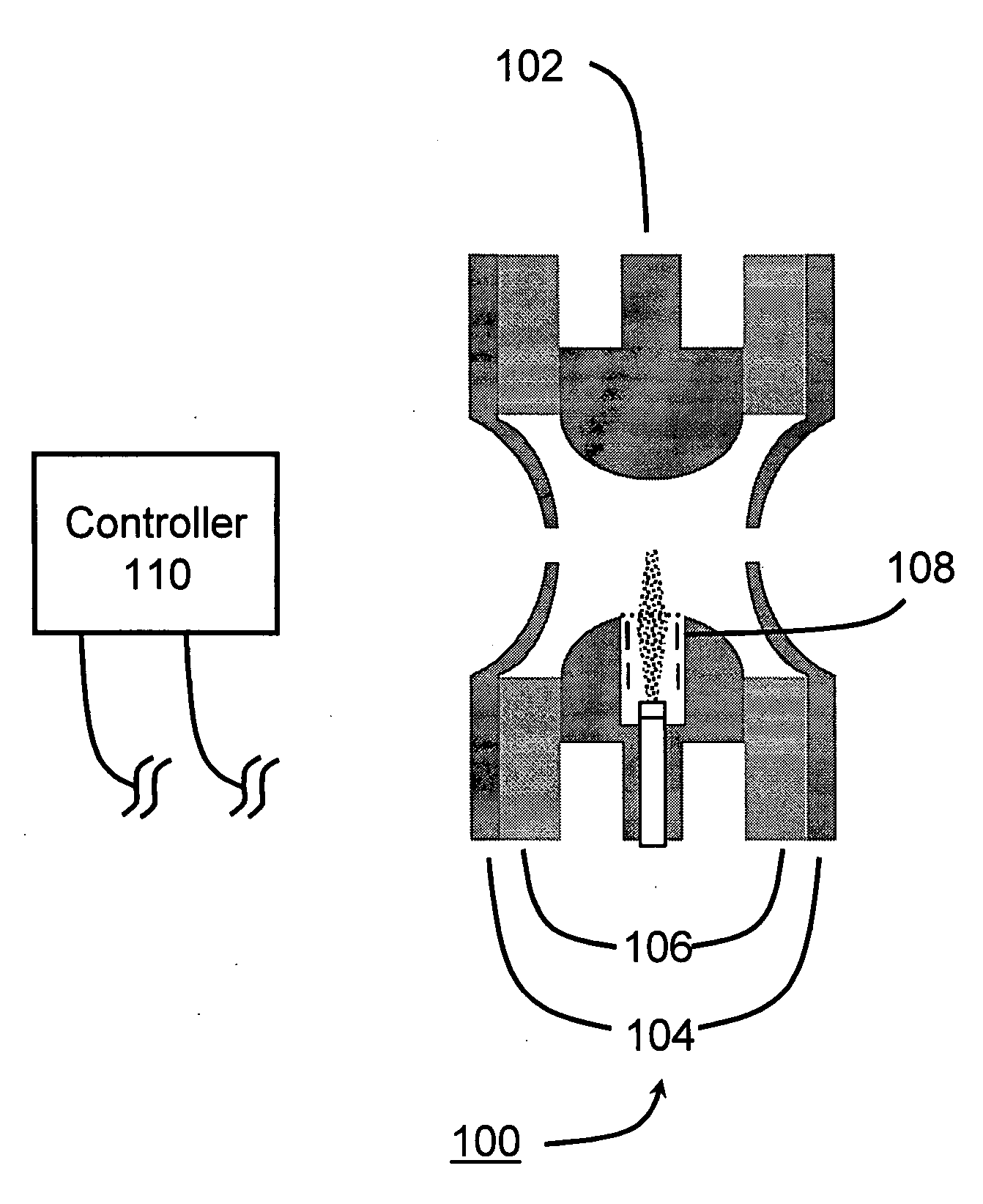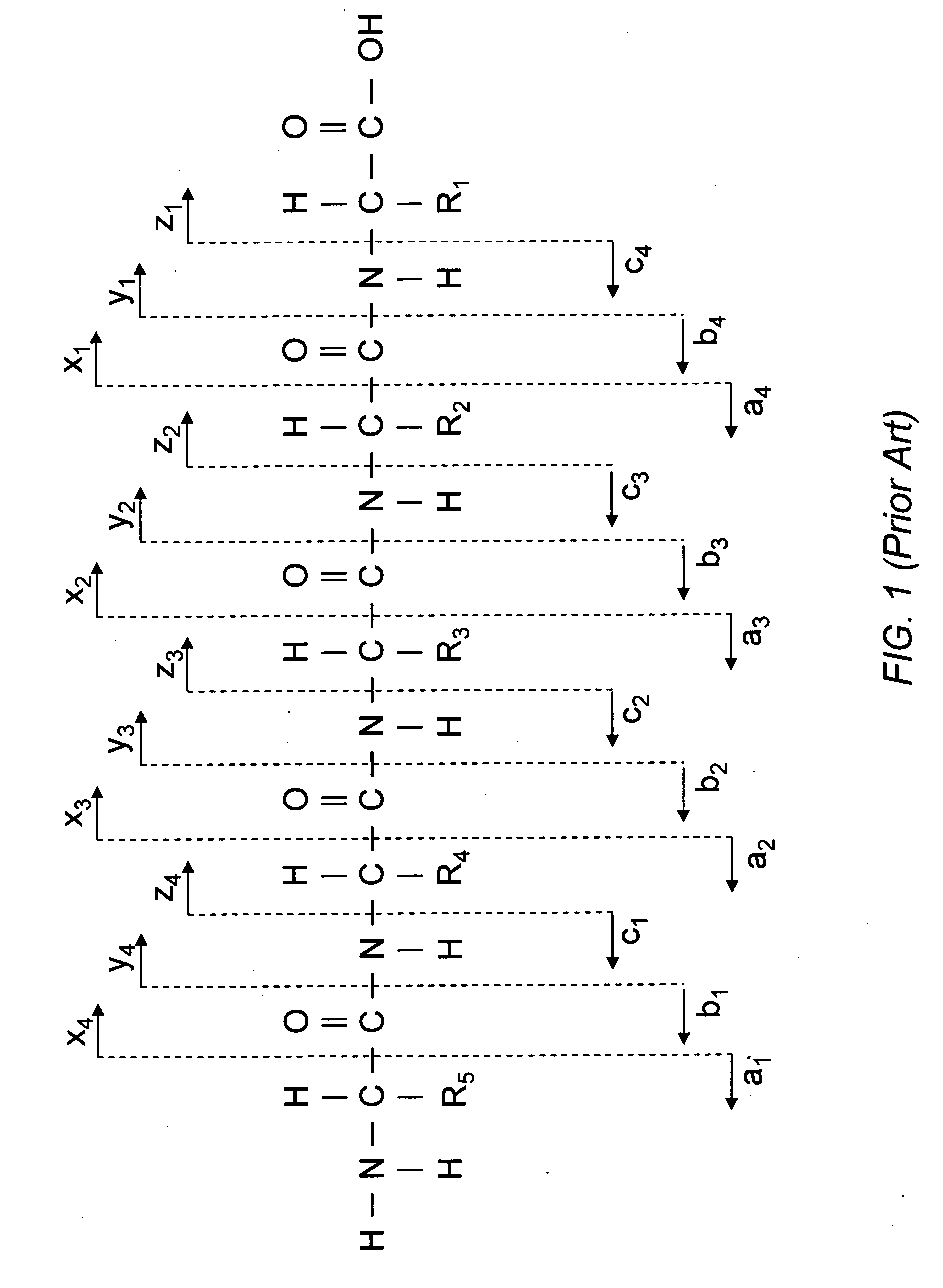Electron capture dissociation in radiofrequency ion traps
a radiofrequency ion and electron capture technology, applied in the direction of isotope separation, electric discharge tubes, separation processes, etc., can solve the problems of ptm site neutral loss, energy randomization, and insufficient energy in any particular bond to cause it to break
- Summary
- Abstract
- Description
- Claims
- Application Information
AI Technical Summary
Benefits of technology
Problems solved by technology
Method used
Image
Examples
Embodiment Construction
[0026]Disclosed is a system and method that includes injecting low-energy electrons in a radiofrequency (RF) ion trap in order to dissociate positive ions by electron capture. The system includes an ion trap, a controller to provide RF that can be switched on and off rapidly, and a source of low-energy electrons that can be turned on and off synchronously with the radiofrequency on / off periods. The RF can be applied to the ring electrode of a QIT and to the linear electrodes of a LIT. The disclosed method can be used with other ion multiple guides that operate with RF. It can also be applied to QIT, LIT, and other multiple ion guides that serve for ion storage only and also for mass analysis.
[0027]In order to deliver a beam of low-energy electrons into an ion trap it is necessary to have a constant voltage potential in the region of greatest ion density so that the electrons are not accelerated. This can be achieved by turning the RF applied to the ion trap momentarily off and turni...
PUM
 Login to View More
Login to View More Abstract
Description
Claims
Application Information
 Login to View More
Login to View More - R&D
- Intellectual Property
- Life Sciences
- Materials
- Tech Scout
- Unparalleled Data Quality
- Higher Quality Content
- 60% Fewer Hallucinations
Browse by: Latest US Patents, China's latest patents, Technical Efficacy Thesaurus, Application Domain, Technology Topic, Popular Technical Reports.
© 2025 PatSnap. All rights reserved.Legal|Privacy policy|Modern Slavery Act Transparency Statement|Sitemap|About US| Contact US: help@patsnap.com



